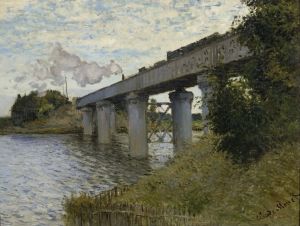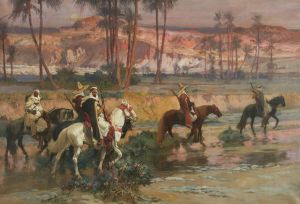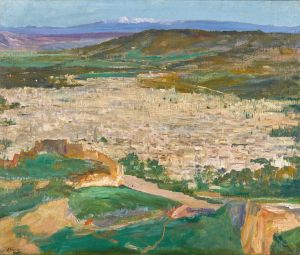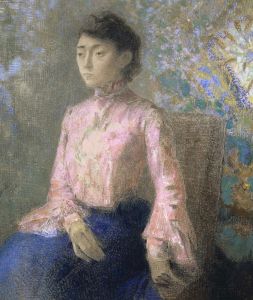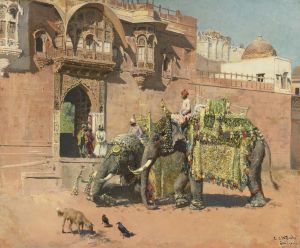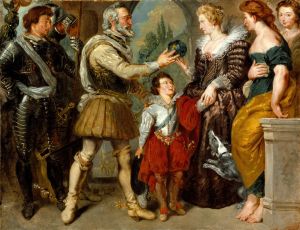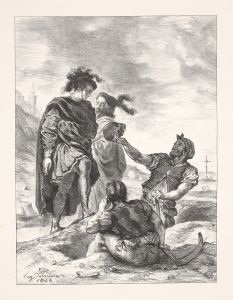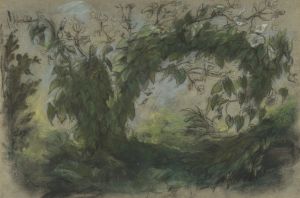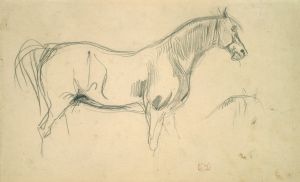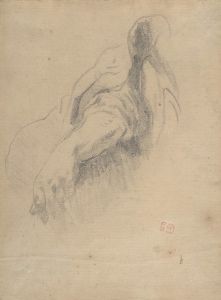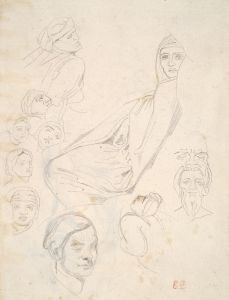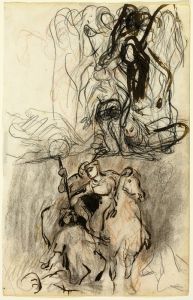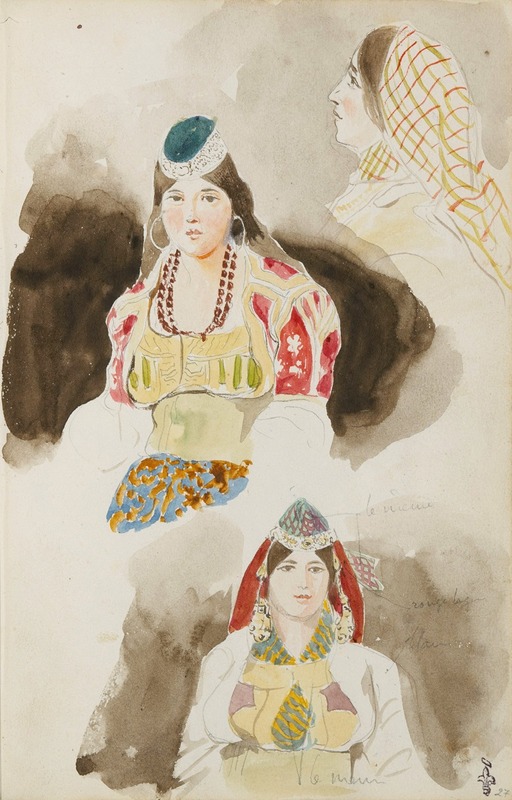
Album de voyage au Maroc
A hand-painted replica of Eugène Delacroix’s masterpiece Album de voyage au Maroc, meticulously crafted by professional artists to capture the true essence of the original. Each piece is created with museum-quality canvas and rare mineral pigments, carefully painted by experienced artists with delicate brushstrokes and rich, layered colors to perfectly recreate the texture of the original artwork. Unlike machine-printed reproductions, this hand-painted version brings the painting to life, infused with the artist’s emotions and skill in every stroke. Whether for personal collection or home decoration, it instantly elevates the artistic atmosphere of any space.
Eugène Delacroix, a prominent French Romantic artist, is renowned for his vivid and expressive use of color and his depictions of historical and contemporary scenes. Among his works, "Album de voyage au Maroc" is a notable collection that documents his journey to Morocco in 1832. This journey was part of a diplomatic mission, and it had a profound impact on Delacroix's artistic vision, providing him with a wealth of inspiration that would influence his work for the rest of his career.
The "Album de voyage au Maroc" is not a single painting but rather a compilation of sketches, watercolors, and notes that Delacroix created during his travels. These works capture the vibrant life and culture of Morocco, showcasing the artist's keen eye for detail and his fascination with the exotic. Delacroix's Moroccan journey allowed him to experience a culture vastly different from his own, and he was particularly captivated by the vivid colors, the bustling markets, the architecture, and the people he encountered.
Delacroix's sketches from this period are characterized by their spontaneity and liveliness. He was particularly interested in capturing the essence of Moroccan life, from the intricate designs of traditional clothing to the dynamic scenes of daily activities. His use of color in these works is notable, as he employed a palette that reflected the intense sunlight and vibrant hues of the Moroccan landscape.
The influence of Delacroix's Moroccan journey is evident in many of his later works. The experience enriched his understanding of color and light, which became more pronounced in his subsequent paintings. The sketches and studies from the "Album de voyage au Maroc" served as a reference for several of his major works, including "Women of Algiers in their Apartment" and "The Sultan of Morocco and his Entourage." These paintings reflect the themes and motifs that Delacroix explored during his time in North Africa, such as the interplay of light and shadow, the richness of color, and the depiction of exotic subjects.
Delacroix's Moroccan experience also contributed to the broader Orientalist movement in European art, which sought to depict the cultures and landscapes of the Middle East and North Africa. While Orientalism has been critiqued for its often romanticized and stereotypical portrayals, Delacroix's work is noted for its attempt to capture the authenticity and vibrancy of Moroccan life.
The "Album de voyage au Maroc" remains an important part of Delacroix's oeuvre, offering insight into the artist's creative process and his ability to translate his experiences into compelling visual narratives. It stands as a testament to Delacroix's skill as a draftsman and his enduring fascination with the world beyond Europe. Through these works, Delacroix not only documented his journey but also expanded the horizons of European art, bringing a new appreciation for the diversity and richness of other cultures.





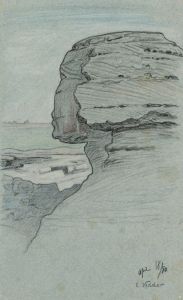
![Temple of Wady Saboua [Wadi al-Sabua], Nubia.](/imgs/217551/s/david-roberts-temple-of-wady-saboua-wadi-alsabua-nubia-52e62db.jpg)
